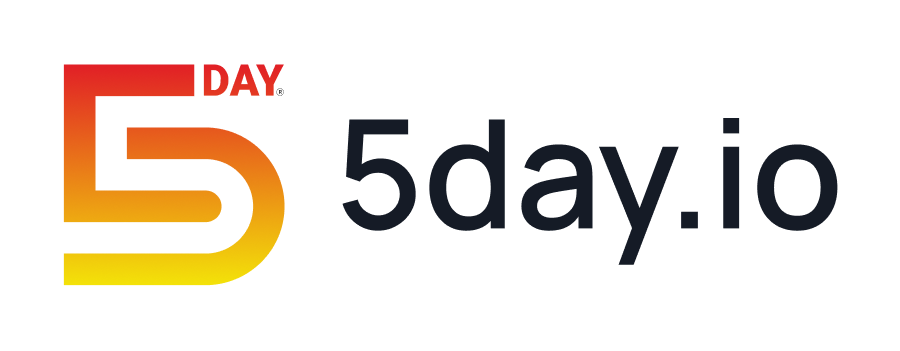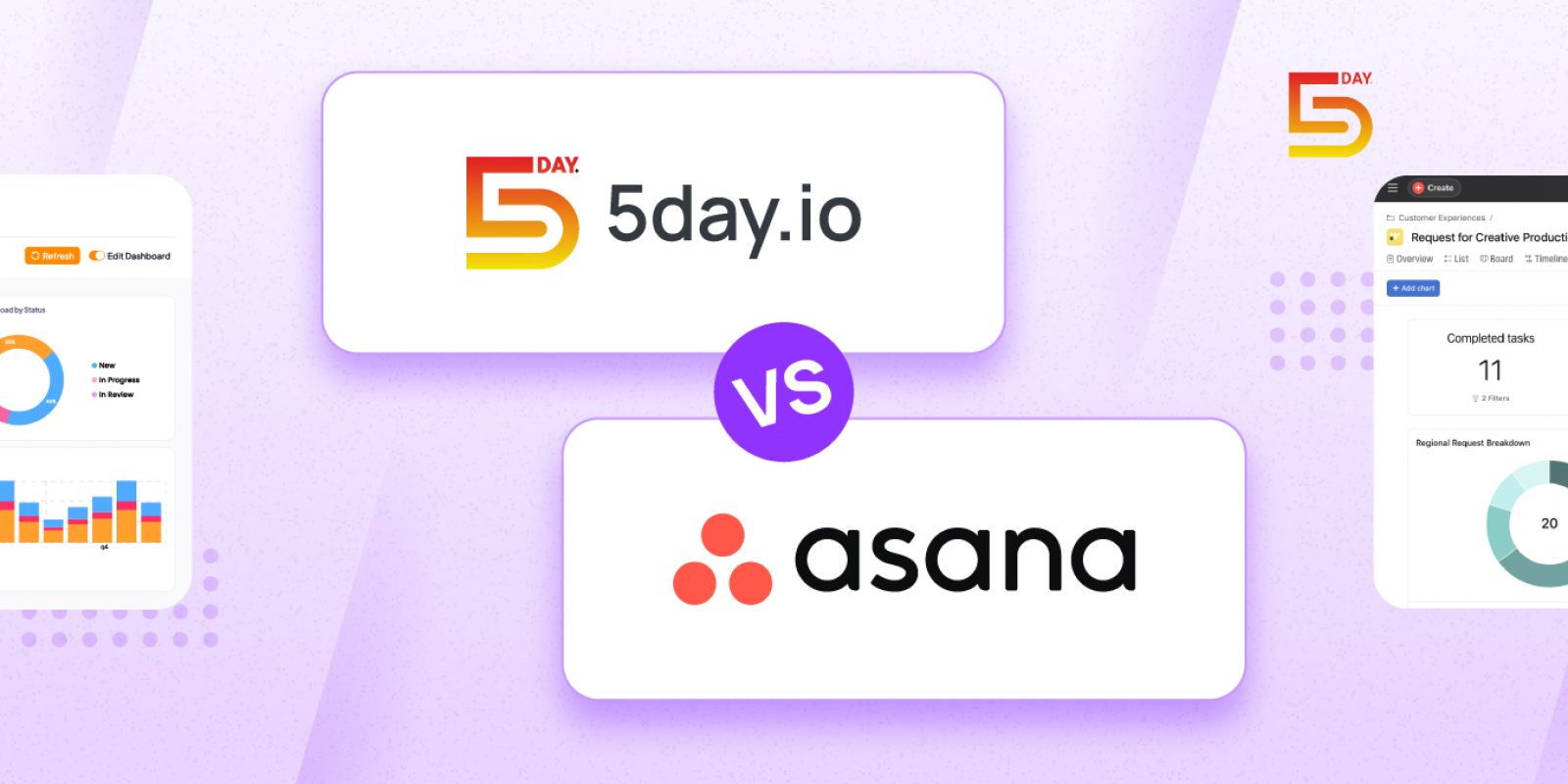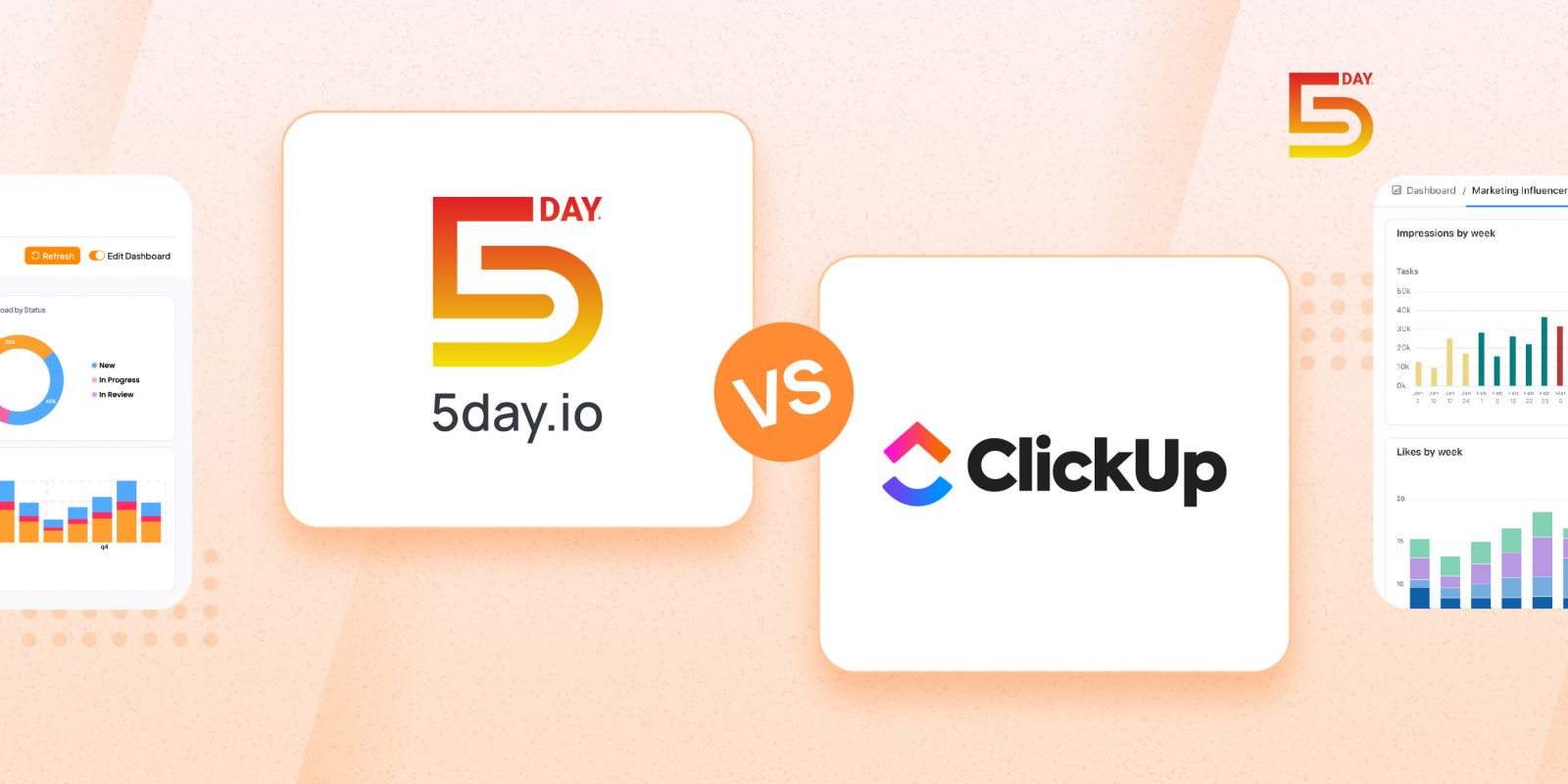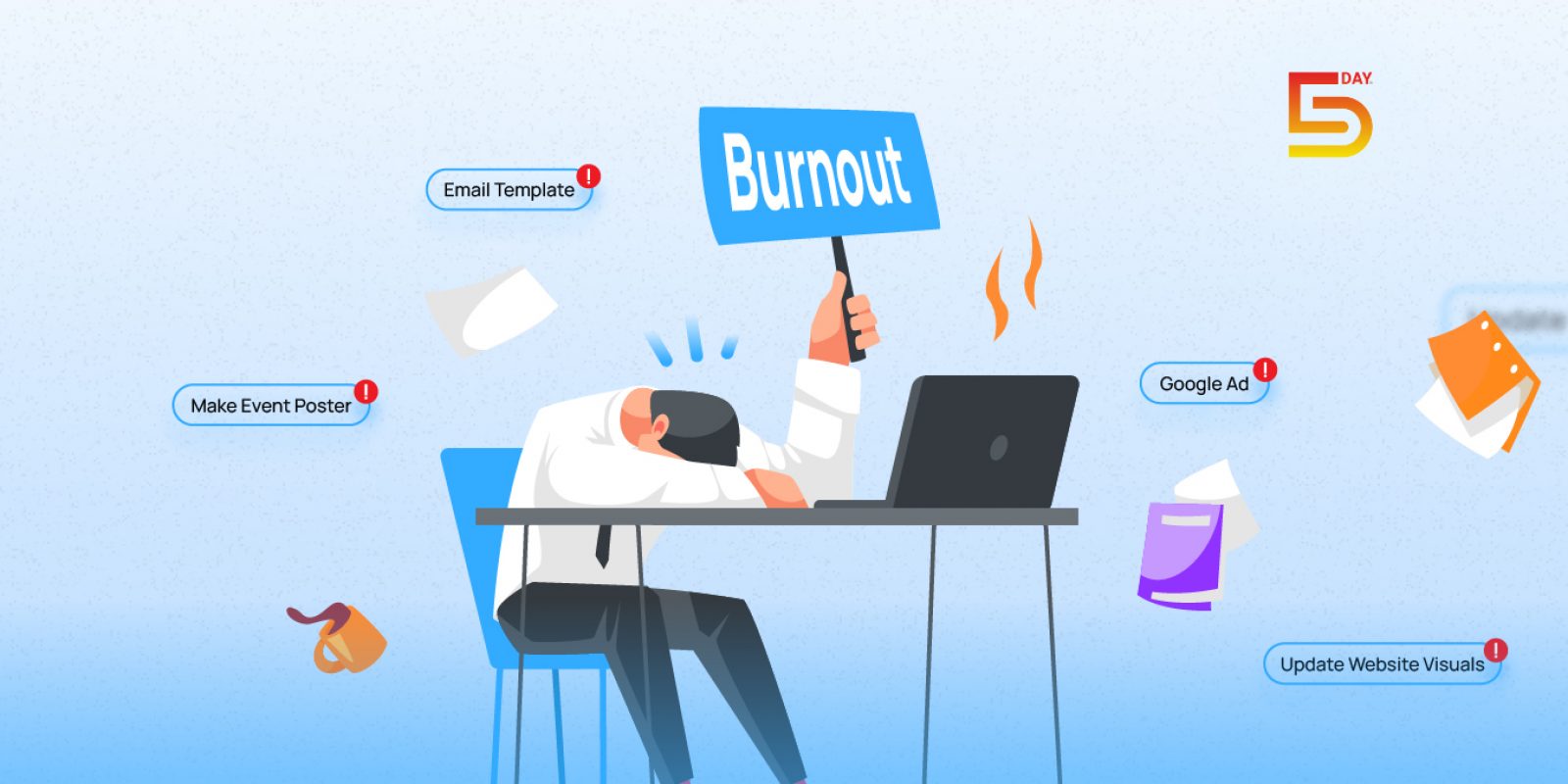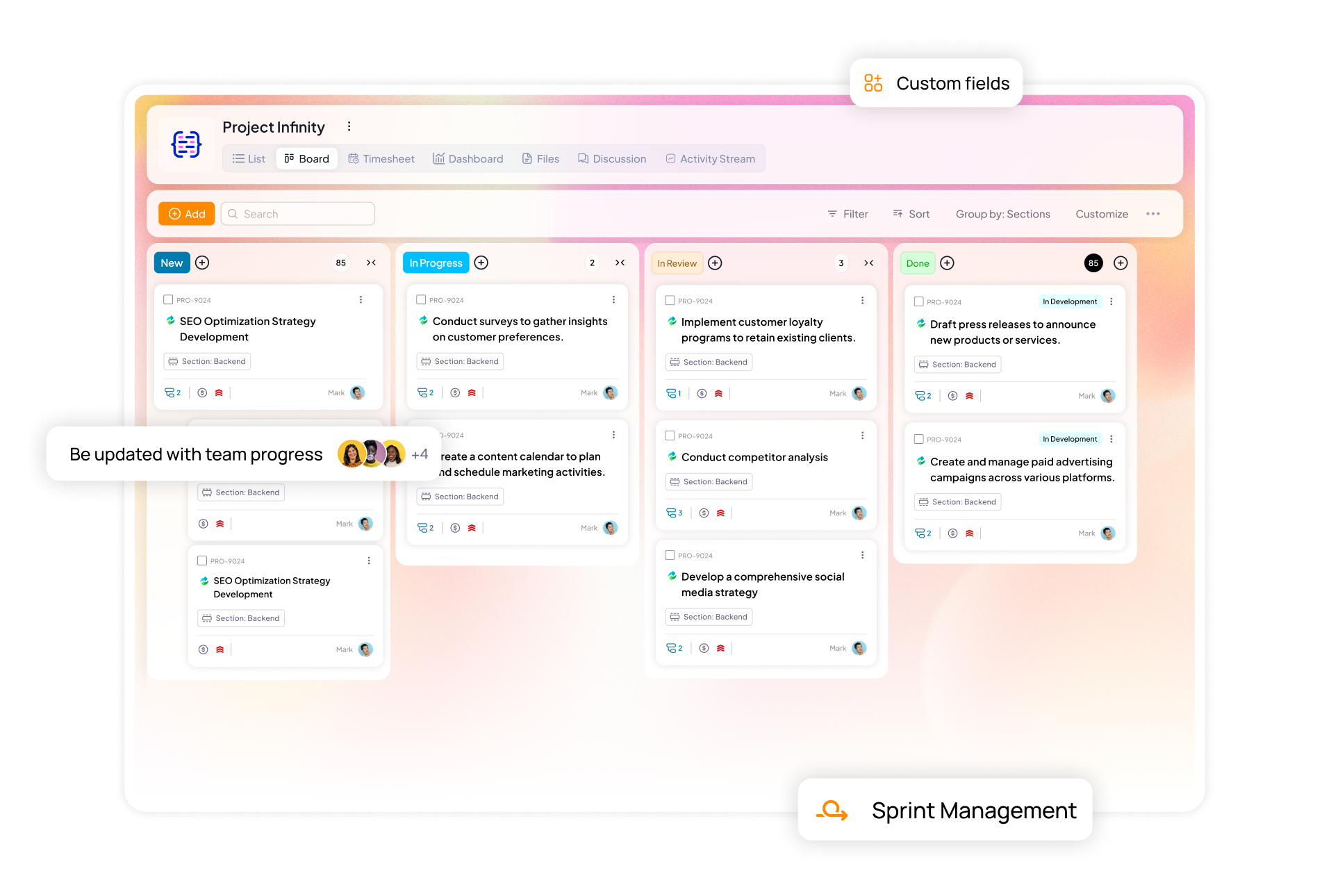Despite its popularity, Asana leaves marketing teams feeling boxed in. The interface, while state-of-the-art, can quickly become cluttered and unintuitive for teams working on multi-part, visual-heavy campaigns.
Instead of accelerating workflows, it adds friction.
There’s a lack of marketing-centric templates tailored to the nuances of campaign planning, or content calendar management.
This results in slower execution, and lost hours that should have gone otherwise with excellent momentum.
But here’s the good news – there are modern, marketing-centric alternatives to Asana designed specifically to put agencies at ease. Tools that understand how creative collaboration works and that streamline feedback and automate the grunt work marketers dread.
If you’ve outgrown Asana or feel like it’s working against your team’s natural flow, it might be time to explore options that truly grasp marketing. In this article, we’re going to do exactly that.
Why marketing teams are looking for Asana alternatives
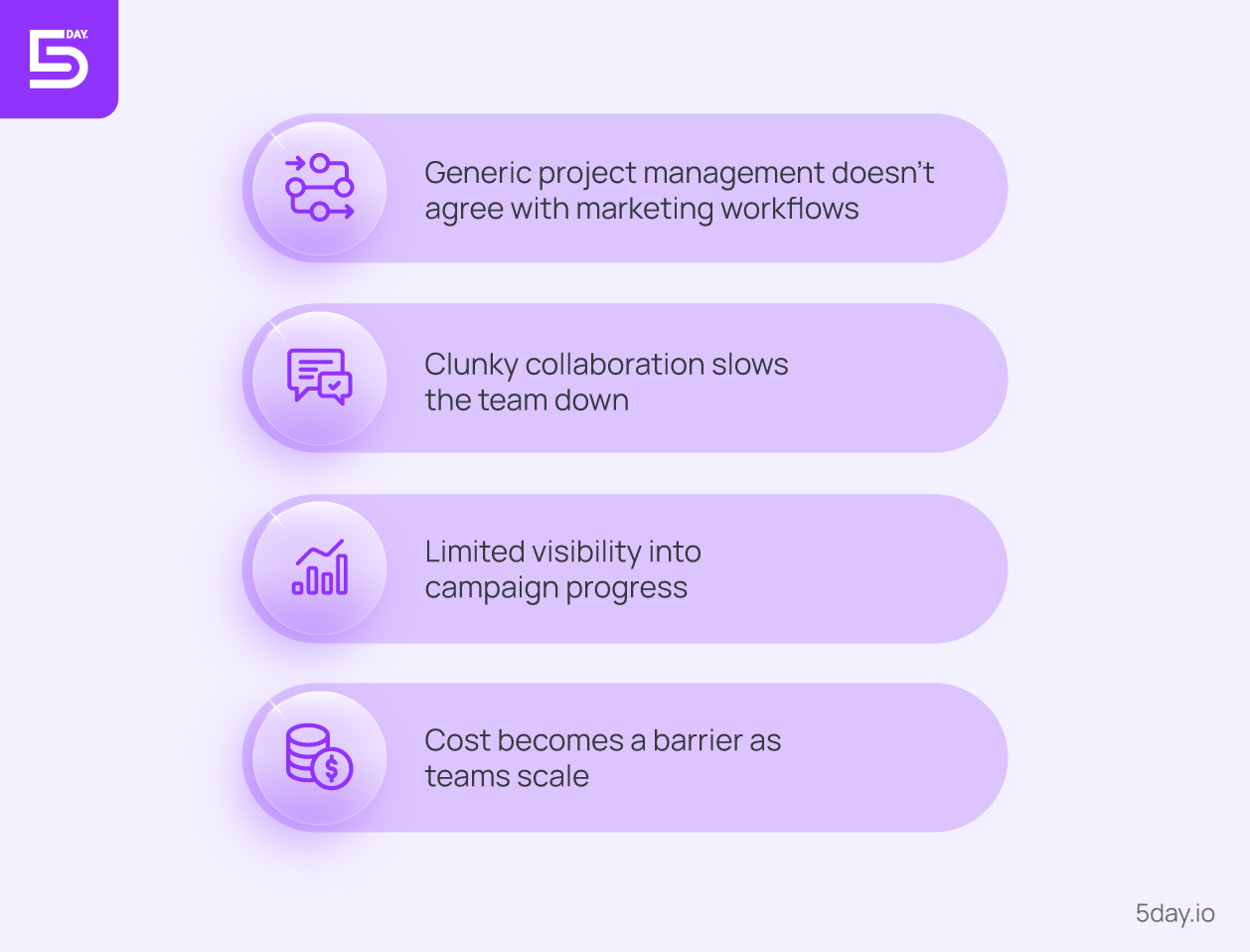
1. Generic project management doesn’t agree with marketing workflows
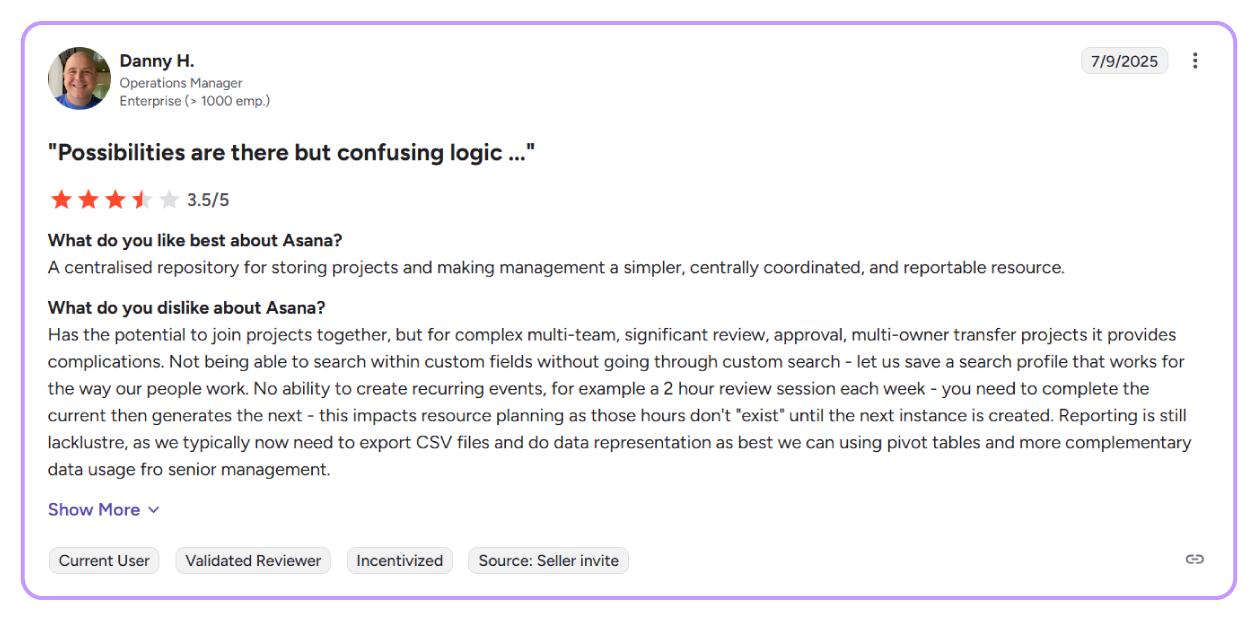
Asana wasn’t built with marketers in mind. Its structure is designed for general task management, making it better suited for engineering, or administrative workflows.
Instead of streamlining work, Asana often requires heavy customization to mimic the flow of a real campaign. Creating workarounds for things like social media pipelines or ad approvals eats up time and can compromise speed.
That’s why marketers increasingly look for Asana alternatives that speak their language from the start.
2. Clunky collaboration slows the team down
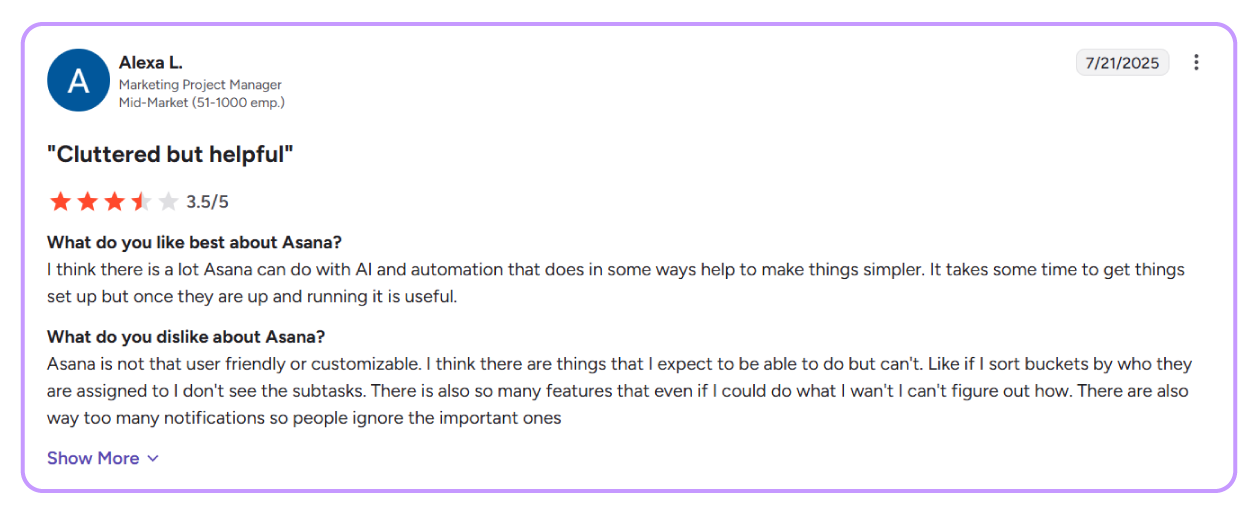
In Asana, internal and client collaboration often feels disjointed. Comment threads get buried in task chains. Asset approvals become a back-and-forth across tools.
Most notably, there’s no built-in support for creative reviews. For teams juggling dozens of visual assets and campaigns, this becomes a major roadblock.
In contrast, the best Asana alternatives for marketing agencies offer seamless review and approval features, visual annotation tools, and intuitive access for external stakeholders, without compromising security or cost.
3. Limited visibility into campaign progress
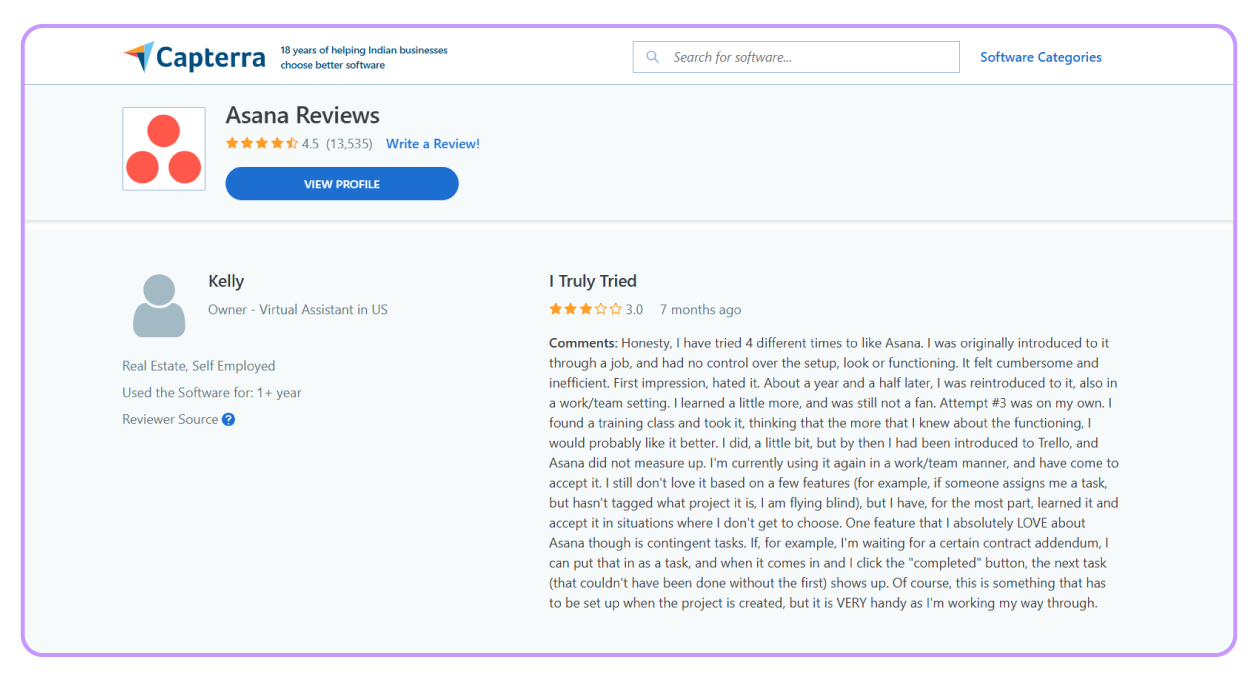
Asana offers task lists and timelines, but they often fall short when managing, multichannel marketing campaigns. There’s no easy way to see which campaigns are live, which assets are still in production, or how workloads are distributed across teams.
Marketers need clarity across multiple dimensions. Generic task boards simply don’t offer that level of strategic oversight. Modern marketing tools fill this gap with dynamic dashboards, and campaign-centric views that show exactly where things stand.
4. Cost becomes a barrier as teams scale
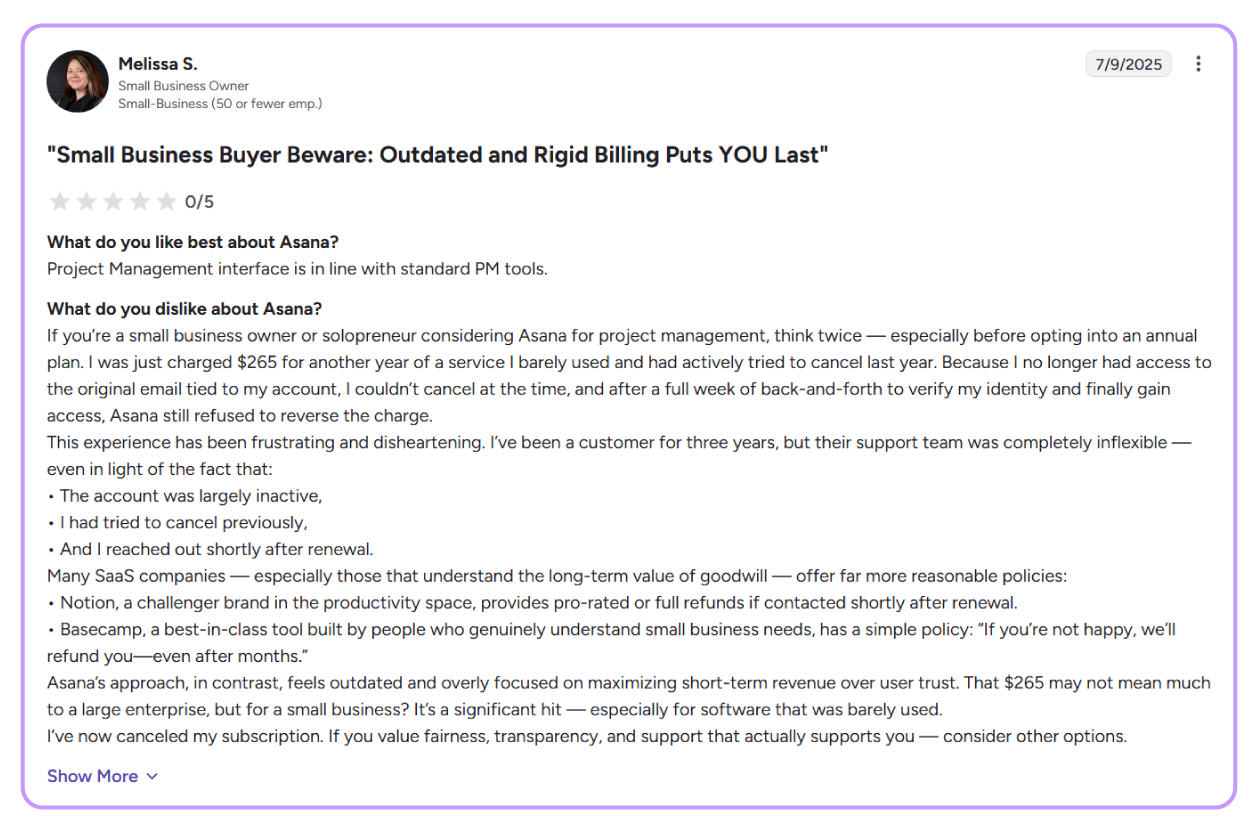
What starts as a cost-effective solution can quickly become expensive as your team expands. Asana charges per user, making it costly to include freelancers, agencies, or clients in the workflow.
For growing marketing teams, especially those with cross-functional contributors, this pricing model becomes unsustainable.
On the other hand, the best affordable Asana equivalents for marketers offer flexible pricing, free guest access, and scalable plans designed to support collaboration. When your team’s size and project scope evolve, your project management tool should grow with you.
Top 5 Asana alternatives for marketing teams
1. 5day.io
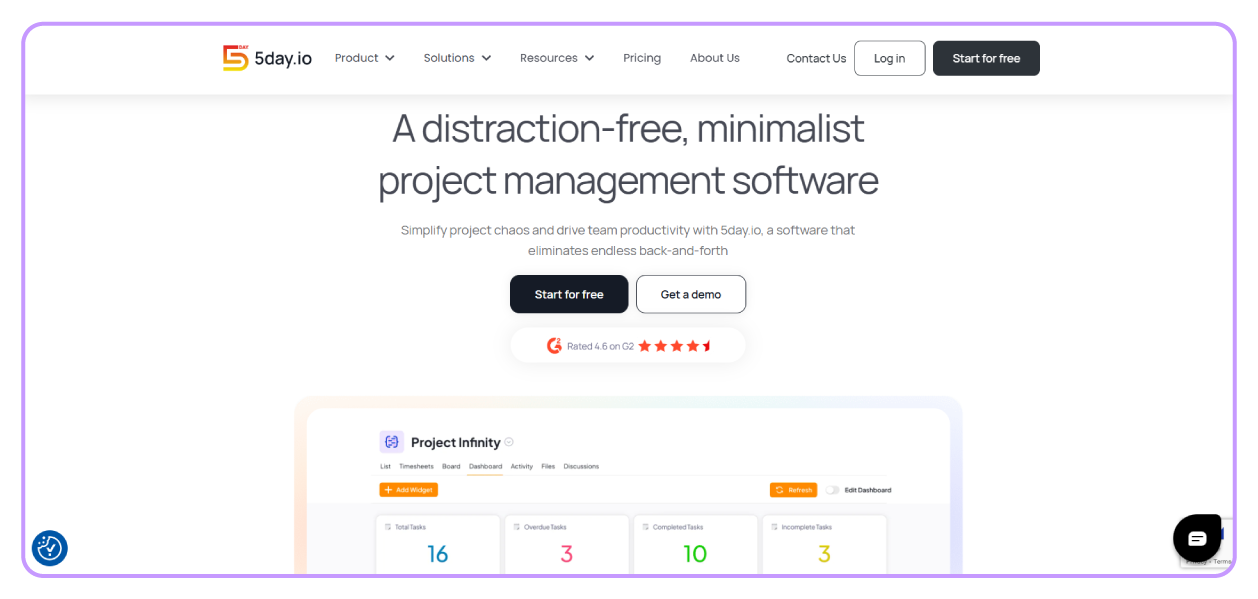
5day.io is a minimalistic, action-oriented project management software designed for high-speed teams that want to get things done without drowning in features.
- Create work items, subitems, and manage sprints with custom fields and priorities
- Use multiple project views including list, and board views for flexible project visualization
- Log billable/non-billable hours, approve timesheets, and track overtime
- Comment, tag team members, upload media, and manage discussions in tasks
- Dashboards with widgets, charts, and metric tracking to monitor team performance
| Aspect | 5day.io | How It Beats Asana |
| Task Structuring | Supports work items & subitems with full hierarchy and custom fields | More flexible with start dates, due dates, subitems, story points, and field customization |
| Time Tracking | Built-in timesheet, billable vs. non-billable hours, approvals | Native time tracking with approvals – no need for third-party tools or add-ons |
| Sprint & Agile Support | Sprint boards, backlog, story points, estimation, progress tracking | Designed natively for sprint management, unlike Asana’s workaround setups |
| Customization | Custom workflows, fields, task types, roles, and permissions | Deeper and more granular customization across roles, permissions, and workflows unlike Asana with provides no custom permissions at all |
| Analytics & KPIs | 8+ widget types for dashboards, KPI-based reporting, visual charts | Stronger built-in analytics with dashboard widgets tailored for productivity |
| AI Features | GPT-powered task writing, assignee suggestion, AI navigation | Asana has limited AI; 5day.io offers richer AI integration for task automation |
Later in this article, we’ll explore why 5day.io is a strong alternative for teams who find Asana too complex or bloated for their daily workflows.
2. Trello
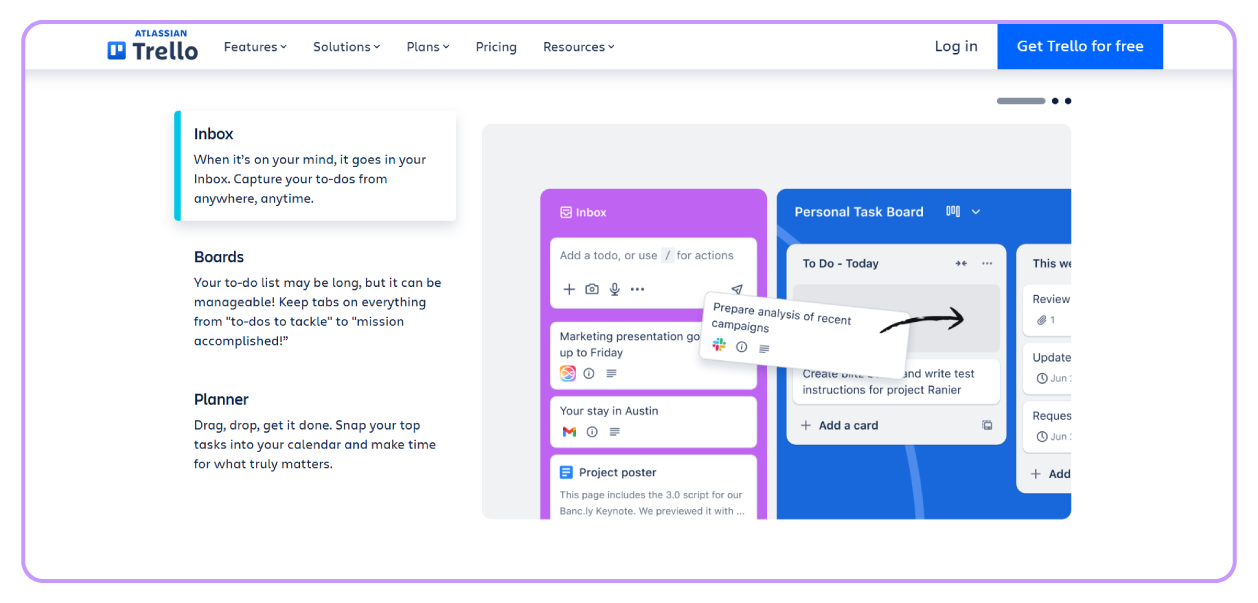
Trello is a visual project management tool based on the Kanban system, making it one of the most intuitive Asana alternatives for marketing teams. Its drag-and-drop card layout helps marketers track progress, and collaborate across functions, all in a single board.
Read Also: 10 Key features of project management software
Trello is especially popular for creative project management because of its visual clarity.
- Each campaign, or marketing asset can be turned into a card and moved across columns like “To Do,” “In Review,” “Approved,” and “Published”, giving teams a visual snapshot of progress
- Integrate tools like Calendar View, Voting (for quick approvals), Google Drive (for asset management), Slack, and Butler automation to tailor Trello to your marketing needs
- Add checklists for deliverables (e.g., ad copy, banners), assign teammates, and comment in real time
- Automate repetitive marketing tasks like moving cards after due dates, triggering status updates, or auto-assigning team members
- Trello offers ready-to-use templates for social media calendars, campaign planning etc.
| Aspect | Trello | How It Beats Asana |
| Campaign Visualization | Simple Kanban boards ideal for visualizing campaign stages | More intuitive and visual than Asana’s task lists |
| Collaboration Tools | Real-time commenting, checklist progress, user tagging | Easier for quick creative collaboration |
| Templates | Wide range of marketing-specific templates | Pre-built for marketers, unlike Asana’s generic starting point |
| Automation | Butler allows easy automations for repetitive tasks | Easier to set up than Asana’s Rules, especially for non-tech marketers |
| Integrations (Power-Ups) | Robust ecosystem for calendar, storage, CRM, approvals | More flexible than Asana’s fixed integrations |
| Ease of Use | Extremely user-friendly, especially for small to mid-sized teams | Less overwhelming than Asana’s multi-layered UI |
| Reporting | Basic reporting unless enhanced through Power-Ups or third-party tools | Limited |
| Scalability | Great for small to mid-size teams; limited functionality at enterprise scale | Suitable for small teams |
Trello lacks the muscle for multi-layered marketing workflows. No native support for creative feedback, content calendars, or cross-channel visibility means marketers often stitch together tools just to ship one campaign.
3. Monday.com
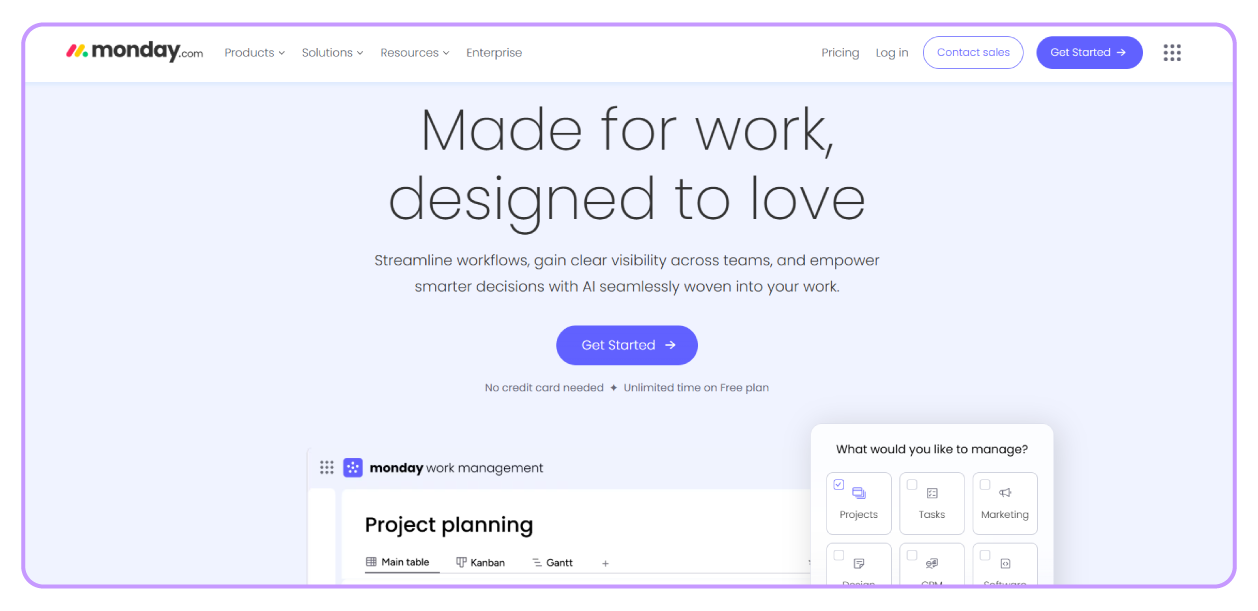
Monday.com is a highly customizable work management platform that has gained popularity among marketing teams for its versatility.
Designed to simplify complex marketing workflows, Monday.com offers a deeply functional colorful, spreadsheet-style interface, making it a top contender for teams looking for an alternative to Asana.
Where Asana can feel rigid and linear, Monday.com offers flexibility in how marketers plan campaigns, organize assets, manage timelines, and collaborate across functions.
- Choose from multiple views, and visualize campaign progress in the format that works best
- Ready-to-use workflows for digital campaigns, and brand asset management help teams skip setup and dive right into execution
- Teams can comment directly on items, mention stakeholders, attach assets, and track feedback in one place
- Monitor team workload, and deadlines with visual dashboards that consolidate key data into digestible insights
- The clean, modern UI is easy to understand for external stakeholders, making it ideal for agencies that need to bring clients into the workflow
| Aspect | Monday.com | How It Beats Asana |
| Campaign Planning | Multiple view options including Gantt, calendar, and Kanban | More flexibility for how marketing teams visualize and plan |
| Templates | Dozens of plug-and-play templates for marketers | Faster setup compared to Asana’s more generic templates |
| Creative Collaboration | Asset management, feedback threads, and in-task comments | More centralized feedback workflow for creative teams |
| Automation | No-code automation builder with pre-set triggers and actions | Easier to implement than Asana’s advanced automation rules |
| Reporting & Dashboards | Real-time dashboards for performance tracking | More intuitive campaign visibility than Asana’s custom fields |
| Ease of Use | Friendly, colorful UI with drag-and-drop customization | Easier onboarding for new users, especially non-technical marketers |
| Client Access | View-only or limited access options for external stakeholders | More control and usability for agencies managing multiple clients |
| Pricing | Slightly more affordable at scale for medium-sized teams | Better value for feature-rich plans compared to Asana’s tiering |
Monday.com is a generalist tool; it works for operations, HR, or IT, but marketers need more than status tracking. It tracks deliverables well but doesn’t map how content ladders up to strategy. It also makes it difficult to scale.
4. ClickUp
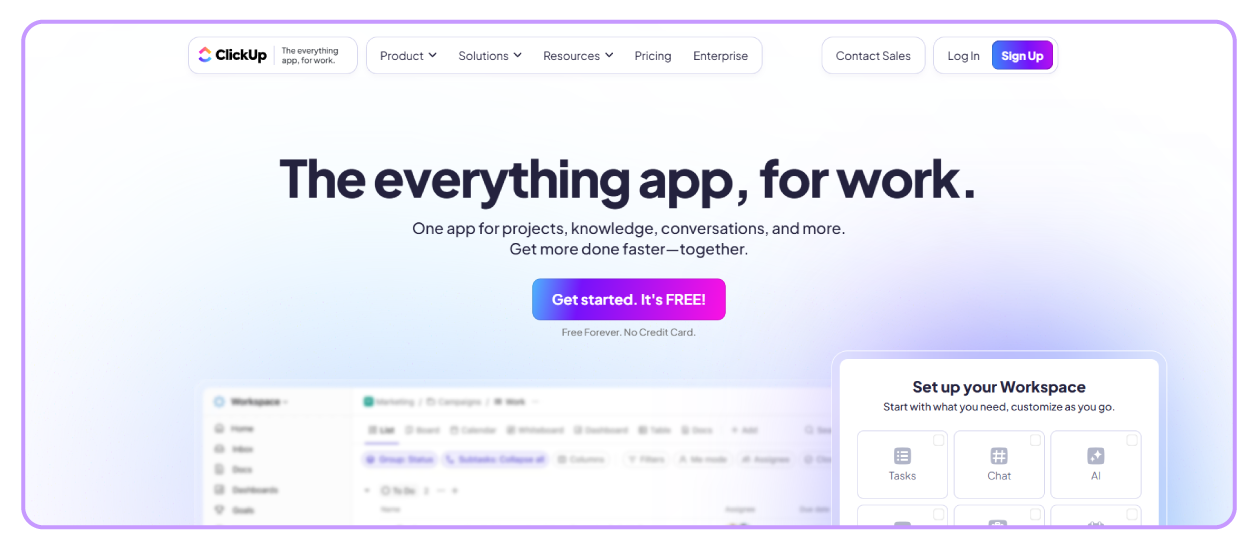
ClickUp is an Asana alternative for marketing teams who need power, and scalability. While Asana offers solid task management, ClickUp goes several layers deeper providing a full workspace that blends project management, documentation, time tracking, asset collaboration, and campaign reporting into one unified system.
What makes ClickUp especially appealing to marketers is its ability to replace a cluttered tool stack. From brainstorming to creative reviews, campaign timelines to analytics dashboards, everything can live inside ClickUp.
- Kanban, List, Gantt, Calendar, Timeline, Mind Map, and Workload views help marketing teams structure work in the format best fits the task
- Create detailed campaign briefs, house brand guidelines, and attach assets directly to tasks
- Leave comments directly on visual assets like images, PDFs, and videos for precise feedback.
- Set up automations to assign tasks, update statuses, send reminders, or move work through stages
- Build custom dashboards to track campaign progress, content pipeline status, team workload, or marketing KPIs
- Use ClickUp’s ready-made templates for blog calendars, product launches, event marketing, SEO planning, or creative production pipelines
| Aspect | ClickUp | How It Beats Asana |
| Workflow Customization | Advanced task hierarchies, nested checklists, custom views | More flexible for managing complex marketing workflows |
| Built-in Docs | In-app docs that connect directly to tasks and projects | Combines strategy, briefs, and execution in one workspace |
| Creative Asset Proofing | Comment directly on media files; version history for creatives | Native proofing tools Asana lacks for visual reviews |
| Automations | Hundreds of triggers/actions with high customizability | More automation options than Asana, better suited for marketing flows |
| Dashboards | Visual dashboards with real-time campaign metrics | Richer reporting and better visibility into campaign status |
| Pricing | Free plan is generous; affordable paid tiers with full features | More value for money than Asana’s mid-tier plans |
| Learning Curve | More powerful, but steeper learning curve | Requires onboarding time compared to Asana’s more immediate UI |
ClickUp tries to be everything for everyone, which often leads to complex configurations that slow teams down. It requires teams to build their own structure, which means valuable time spent setting up everything from scratch.
5. Teamwork
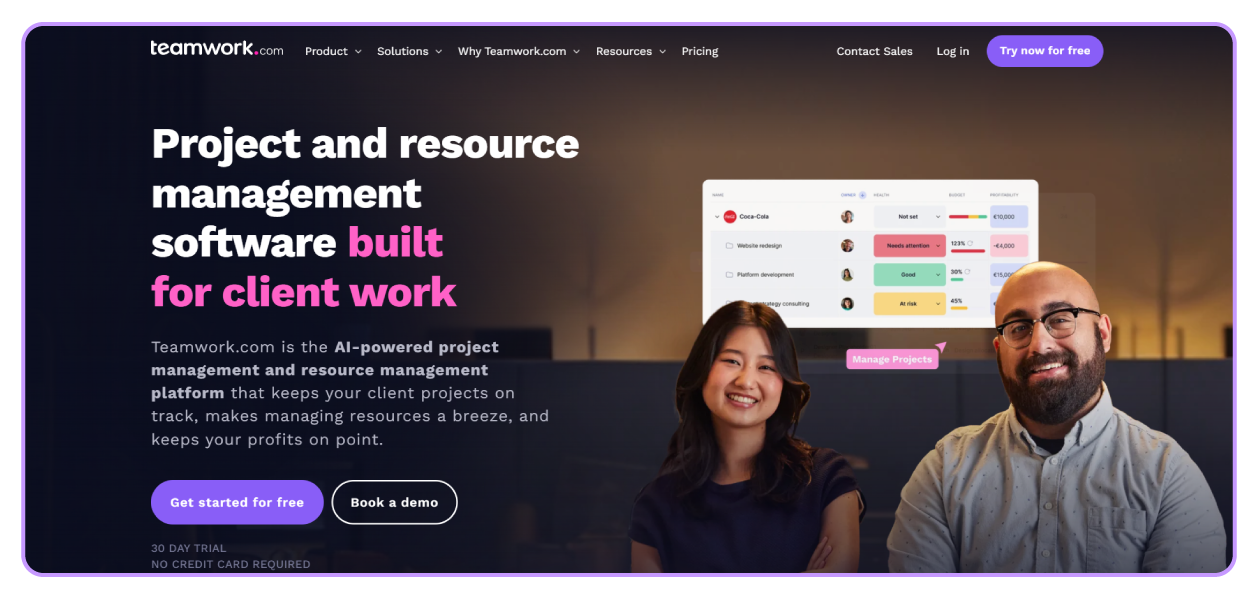
Teamwork is a project management platform purpose-built for client work, making it a standout Asana alternative for marketing agencies and in-house teams managing multiple stakeholders.
Unlike Asana, which tries to cater broadly across industries, Teamwork understands the nuances of marketing workflows, client reporting, and deadline-heavy campaigns.
Read Also: How 5day.io Helps Simplify Marketing Teams Plan, and Execute a Campaign
It offers a clean interface, easy task organization, and powerful collaboration features, but what truly sets it apart is its billing, time tracking, and client permissions.
For marketing teams who work with external clients or need to track billable hours, Teamwork is a steal.
- Teamwork was built for agencies, so it includes features like client-specific workspaces, permission controls, and collaboration options that don’t require paid seats
- Track how much time is spent on campaign creation, content development, or ad management
- Unlike Asana, Teamwork lets you generate invoices directly from tracked time and project budgets
- Use pre-designed templates for recurring workflows like campaign launches, event marketing, or content production
- Monitor campaign progress, team bandwidth, and deadlines with real-time reporting and visual timelines
- Built-in messaging, file sharing, and task comments create a central hub for all campaign-related communication
| Aspect | Teamwork | How It Beats Asana |
| Client Collaboration | Separate client views, permissions, and communication channels | Better suited for agencies and client-facing marketing teams |
| Time Tracking | Native time logs tied to tasks and milestones | Asana lacks built-in time tracking |
| Billing & Invoicing | Turn tracked hours into invoices inside the platform | No such functionality in Asana |
| Templates | Reusable project templates for common marketing campaigns | Faster setup for agencies managing repetitive work |
| Workload Management | Visual team capacity planner and task forecasting | More granular team management than Asana’s timeline view |
| Reporting | Real-time dashboards and client-facing reports | More tailored reporting for external communication |
| Ease of Use | Clean interface with minimal clutter | Easier for new teams than Asana’s task-nesting complexity |
While Teamwork suits general project coordination, it lacks the depth required to manage high-volume campaign assets, dynamic timelines, and cross-functional marketing workflows.
Introducing the simpler alternative: 5day.io
5day.io brings something refreshingly different to the table with its clarity, simplicity, and speed, without sacrificing power.
For busy marketing teams who don’t have the time (or patience) to spend weeks configuring automations, and dashboards, 5day.io is the freemium Asana alternative for marketers that simply makes sense.
Whether you’re a solo marketer, a startup team, or a growing agency, 5day.io’s freemium model offers essential features without the paywall pressure. As your needs evolve, it provides affordable upgrades without penalizing growth.
- Start instantly with templates for content calendars, product launches, social media schedules, email sequences, and more
- Get a clear, drag-and-drop view of every campaign stage, from ideation to live launch
- No external tools or confusing chains, review and approve creative assets directly in the task flow
- With a minimalist interface and helpful cues, teams can focus more on marketing and less on managing the tool
- Lightweight automations help move tasks forward, send reminders, and update statuses
5day.io doesn’t ask marketers to adapt to a generic project flow. Instead, it supports the natural rhythm of marketing.
Calendars that flow naturally
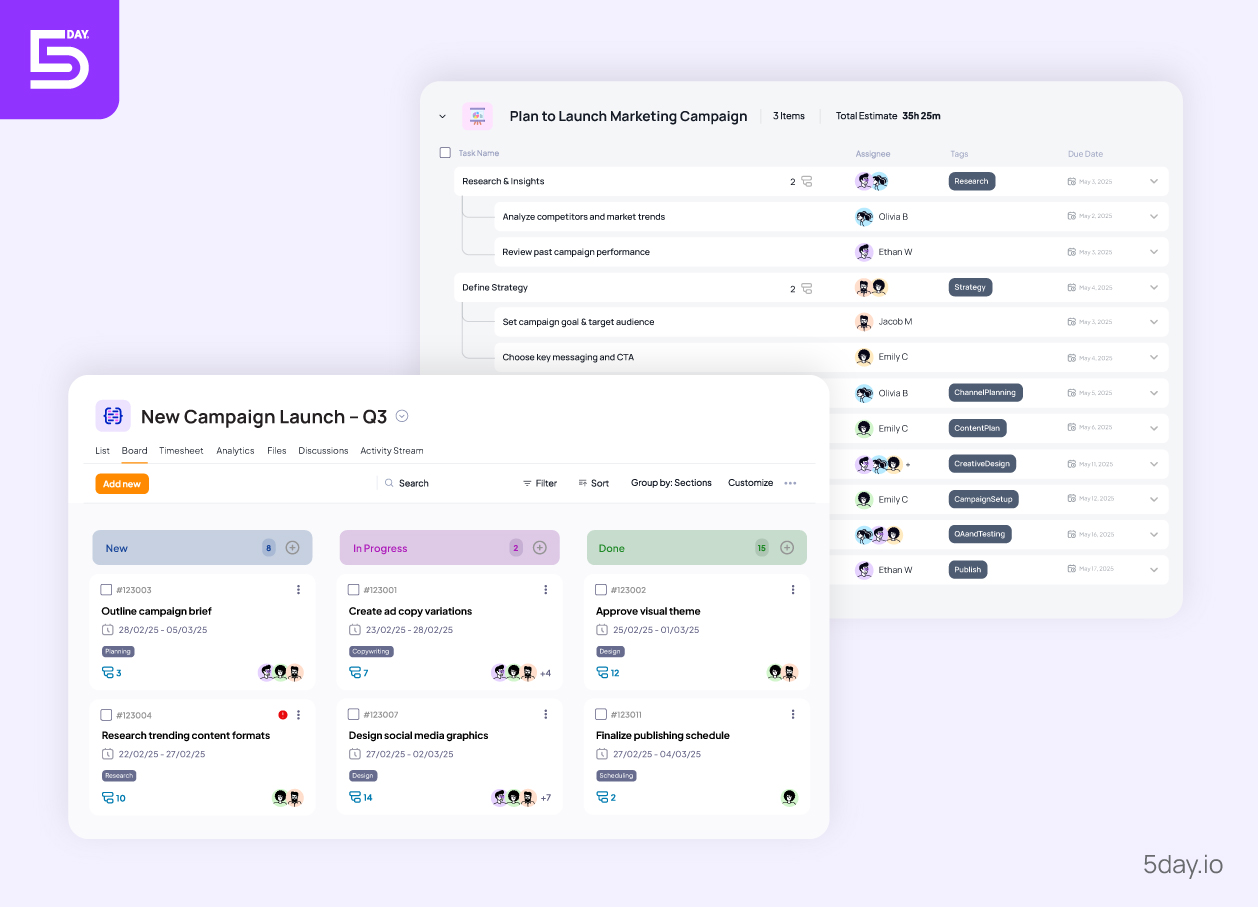
Use list or board views to plan content across channels, blogs, social posts, newsletters, video scripts, all with deadlines, assignees, time tracking, and file attachments.
- Multiple views: calendar, board, or list
- Tags, priorities, and custom fields to categorize content
- Real-time progress with percent complete tracking
Campaign launch checklists that keep everyone aligned
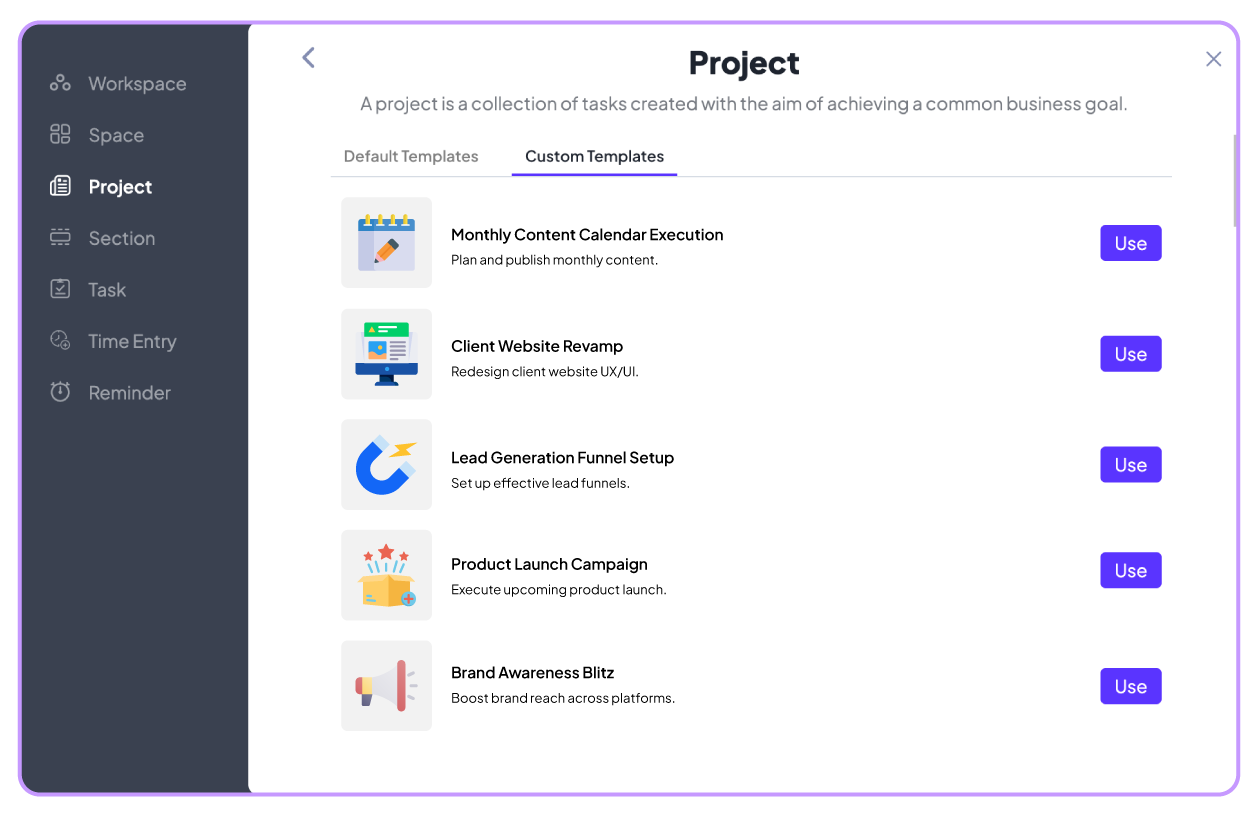
Create templates for ad campaign planning, blog post planning, campaign management, content calendars, email marketing and event planning. Break work down into structured tasks and subtasks, then track them across phases with status workflows and assignee-wise time estimates.
- Sprint management to time-box work
- Start/end dates with overdue indicators
- Subtasks with dependencies (start-start, end-end, etc.)
Read Also: Agile Project Management
Creative collaboration and feedback without clutter
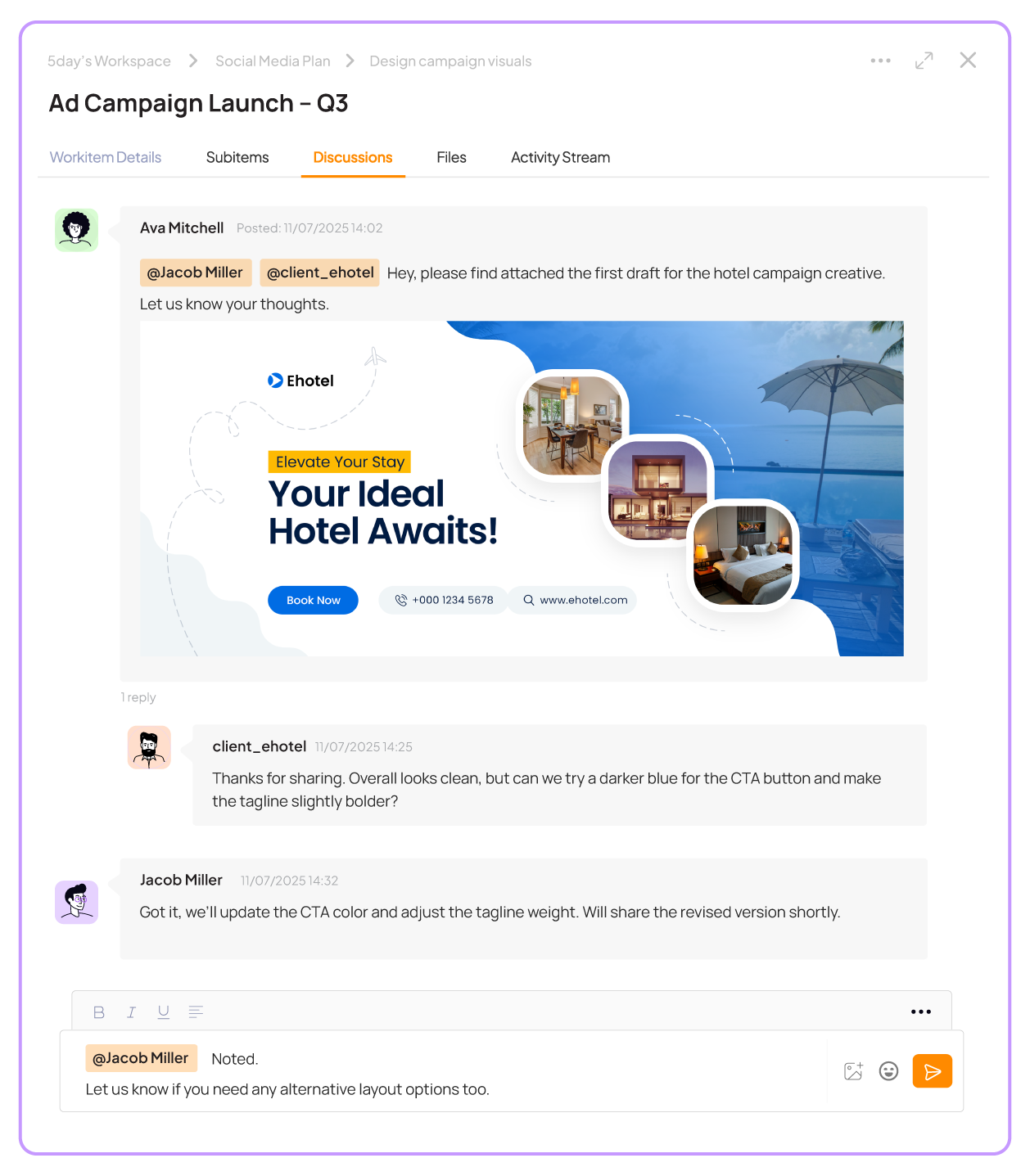
With 5day.io, your creative team can upload assets to the platform.
- Native file upload + in-line comments
- Threaded discussions with tagging (person + task)
- Media support for image and video feedback
Integrated time tracking & approval that doesn’t break flow
![]()
5day.io comes with native timesheet functionality built right into its core. This makes it ideal for marketing teams (especially agencies) who want to track effort, manage billables, and monitor productivity, all without leaving the platform.
- Log time per task directly in the work item, manual or automated entry
- Track billable vs non-billable hours, internal work, and time-off in one dashboard
- Enable time approval flows for managers or clients
- Filter time logs by user, task, date, and client for billing, analysis, or reporting
- Automate reminders for time logging and approvals, so every task gets recorded, reviewed, and delivered on time
Smart notifications that keep you informed
Staying on top of work shouldn’t mean drowning in alerts.
5day.io’s notification system is context-aware and configurable, so you only get pinged when it matters:
- Alerts for status changes, time tracking gaps, upcoming due dates, and mentions
- Custom reminder settings (per user and project)
- Integrated across web, email, and mobile so you stay synced wherever you are
- “Do Not Disturb” and work schedule preferences to protect focus time
Freemium plan that grows with you
Not every team starts big. Whether you’re a lean in-house team or a boutique agency, 5day.io’s generous freemium tier gives you access to real features, not a hollow trial.
- Unlimited work items and subitems
- Core project views (List, Board, Timesheet)
- File collaboration, discussions, and time tracking
- Up to full project templates and collaboration tools
How to choose the right Asana alternative for your marketing team
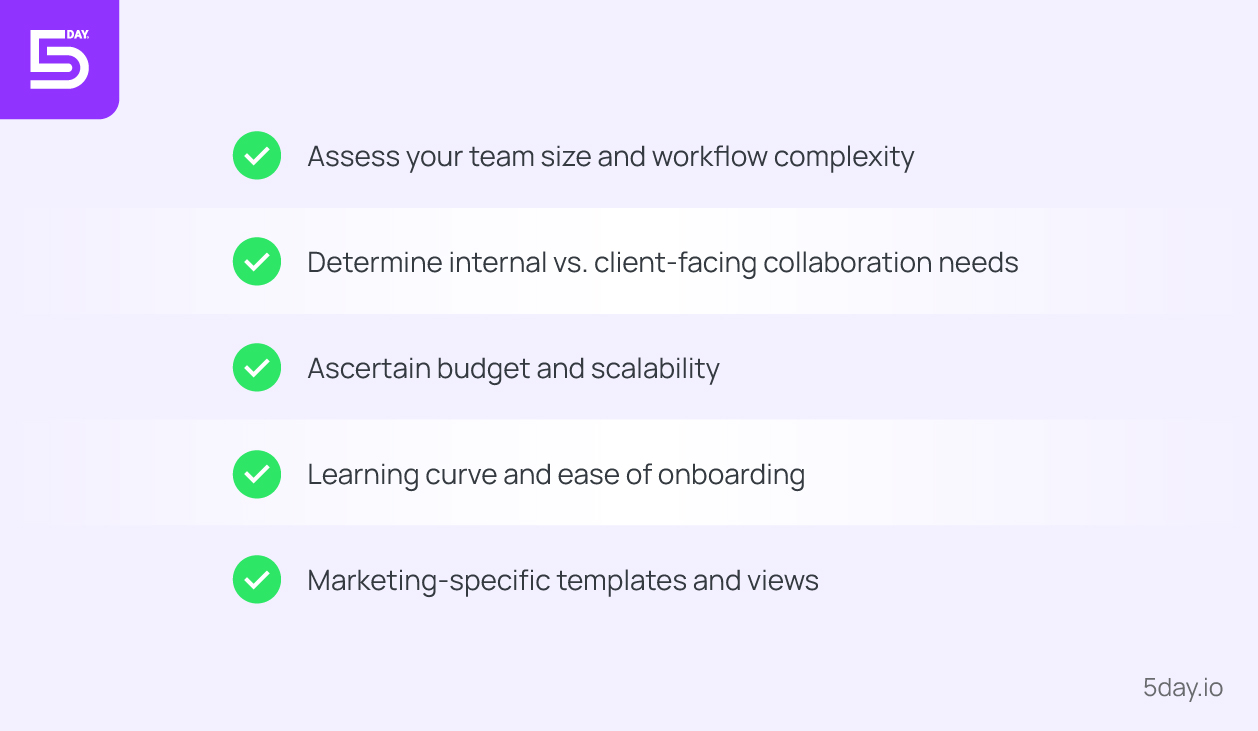
Here’s a quick but powerful guide to help you evaluate your options and find the platform that fits your marketing team like a glove.
1. Team size and workflow complexity
Start by understanding your team’s structure and how layered your campaigns are.
| Small Teams (1–5 people) | Prioritize tools with lightweight setup, and minimal admin overhead. Simplicity and speed are crucial. |
| Mid-Sized Teams (5–15) | Look for tools that allow some degree of customization, shared dashboards, and role-based task views. |
| Agencies or Large In-House Teams (15+) | You’ll need task hierarchies, cross-project views, sprint planning, and possibly even client billing and time tracking. |
2. Internal vs. client-facing collaboration needs
Marketing is rarely done in a silo.
Be crystal clear about your collaboration features.
| Internal-Only Teams | A clean commenting system, real-time updates, and in-task file discussions may be enough |
| Client-Facing Teams/Agencies | Choose a platform that supports external collaboration without friction. Look for guest access, view-only permissions, and client workspaces. |
3. Budget and scalability
Marketing budgets aren’t always predictable, especially in growing startups or agencies with fluctuating clients.
Choose a tool that:
- Has a generous freemium plan (especially if you’re experimenting)
- Offers predictable pricing as you scale, not surprise per-seat hikes
- Doesn’t lock core features behind the highest tiers (like time tracking, start dates, views, or collaboration tools)
4. Learning curve and ease of onboarding
Marketing teams move fast. Your tool should move faster.
- Is the interface intuitive for non-technical team members?
- Can you onboard a new freelancer, content creator, or designer without handholding?
- Are views customizable without needing a “workspace admin” to reconfigure everything?
Platforms like 5day.io shine here, offering project templates, drag-and-drop interfaces, and instant usability, so your team can execute from day one.
5. Marketing-specific templates and views
This is where many tools fall short.
Generic task boards don’t reflect how marketers plan campaigns, manage creative approvals, or track content pipelines.
Look for tools that offer:
- Pre-built templates for marketing use cases: content calendars, email campaigns, ad asset trackers, product launches
- Views built for campaigns, like calendar, timeline, board, and list view
- Custom fields for things like channels, platforms, story points, or audience segments
Why build your workflow from scratch when platforms like 5day.io offer these natively?
